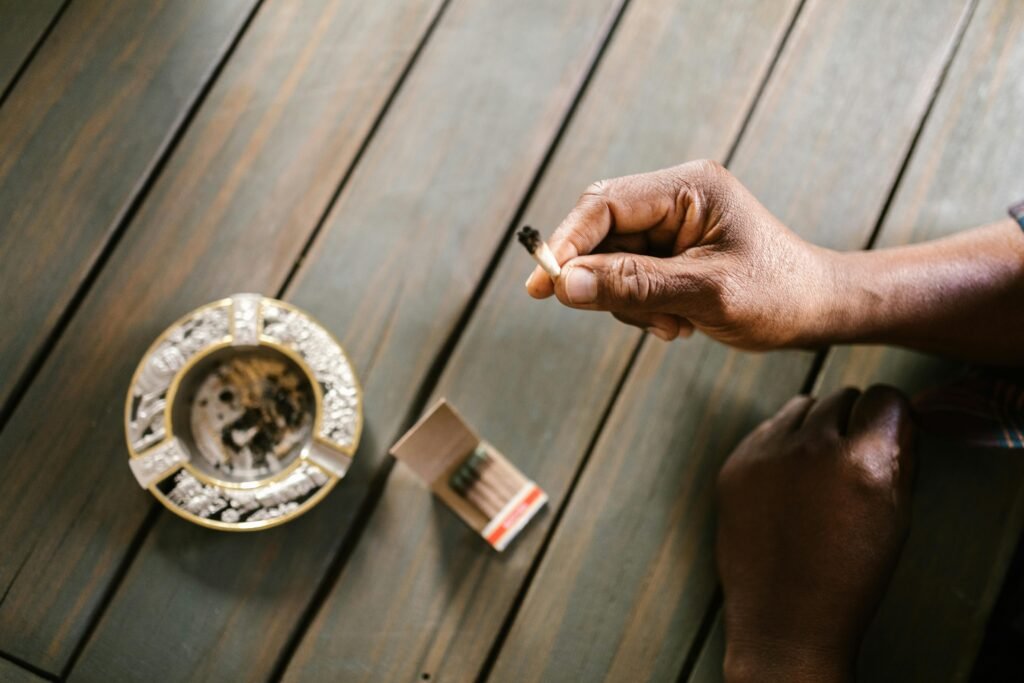Building Caribbean Cannabis Tourism Our Way
The Caribbean has always been known for its sun, sea, music, and culture. But today, there’s another powerful draw that travellers are seeking when they visit our islands—Cannabis tourism. Around the world, Cannabis is being redefined from a criminalised substance into a source of wellness, culture, and economic opportunity. For countries like Jamaica, this shift has already begun to shape their tourism industry.
But what about Trinidad & Tobago? How can we use Cannabis tourism to empower our people, strengthen our culture, and create authentic experiences that the world is already eager for?
At Ladies of 420, we believe Cannabis tourism has the power to transform the Caribbean—if we do it in a way that is true to our roots.
Cannabis Tourism in the Caribbean
Across the world, Cannabis tourism is booming. From California to Amsterdam, travellers are seeking destinations where Cannabis is legal and celebrated. But the Caribbean has something unique to offer: a blend of culture, history, and natural beauty that cannot be replicated anywhere else.
For decades, the Caribbean has been associated with Cannabis, whether through Rastafarian spirituality, reggae culture, or bush medicine traditions. Now, as laws change and stigma begins to fade, we have an opportunity to turn that reputation into real, sustainable tourism experiences.
Jamaica and Cannabis Tourism: A Global Reputation
When most people think of Cannabis in the Caribbean, the first country that comes to mind is Jamaica. And that’s no accident. Jamaica has spent decades tying Cannabis to its global identity through Rastafarian culture, reggae music, and natural healing traditions.
Today, Jamaica is home to:
*Ganja farm tours that take travellers into the hills to see cultivation firsthand
*Cannabis-friendly wellness retreats offering yoga, meditation, and spa treatments
*Infused spa and beauty products sold in tourist hubs
*Tours that combine history, spirituality, and Cannabis culture
This didn’t happen overnight. Jamaica positioned itself early as the “face” of Cannabis in the Caribbean and continues to benefit from that reputation.
Trinidad & Tobago’s Cannabis Industry: Untapped Potential
Now, let’s look at Trinidad & Tobago. We decriminalised small amounts of Cannabis in 2019—a major step forward. But since then, progress has slowed. Licensing systems remain unclear. Regulations are still stuck in government offices. And unlike Jamaica, we have not tied Cannabis into our tourism brand in any meaningful way.
That means we’re missing out—not just on tourist dollars, but on opportunities for empowerment, education, and innovation within our communities.
Trinidad & Tobago has all the ingredients: Carnival, calypso, soca, bush medicine traditions, and Tobago’s healing energy. What we lack is the structure and boldness to make Cannabis part of our tourism identity.
What Cannabis Tourism Could Look Like in Trinidad & Tobago
Cannabis tourism is not simply about smoking a joint on the beach. It’s about building experiences around the plant that highlight our culture, history, and creativity.
Here are a few possibilities that could thrive in Trinidad & Tobago:
*Herbal Hikes and Farm Tours: Guided bush walks in Paramin or Tobago, where travellers learn about Cannabis cultivation alongside other traditional herbs.
*Cooking with Cannabis Classes: Showcasing local dishes infused with Cannabis or hemp, paired with lessons about flavour, dosage, and culture.
*Wellness Retreats: Cannabis-friendly yoga, meditation, and sound healing sessions. These retreats could combine Caribbean energy with global wellness trends.
*Cannabis Carnival Packages: Infused teas and tonics for pre-Carnival detox, as well as recovery packages for tired bodies after the festival.
*Creative Sessions: Sip-and-smoke painting workshops, poetry nights, or music jam sessions powered by the herb.
What makes these ideas powerful is that they don’t require massive corporations or foreign investors. They can be built by everyday people—farmers, cooks, artisans, healers, tour guides, and hosts. Cannabis tourism has the potential to open doors for those who are too often left out of the mainstream economy.
The Economic Benefits of Cannabis Tourism
Tourism is already the Caribbean’s lifeblood. But let’s be honest: most of the money doesn’t stay in local hands. Large hotel chains, foreign-owned resorts, and international investors often dominate the sector.
Cannabis tourism offers us the chance to change that.
Imagine this: a visitor books a three-day retreat in Tobago. They stay in a locally owned guesthouse. Their food is prepared by a local chef, using herbs sourced from nearby farmers. They attend workshops hosted by artisans, sip teas made by herbalists, and buy infused skincare products crafted by small businesses.
That money doesn’t leave the island—it circulates within the community. Cannabis tourism has the power to make tourism more inclusive, more grassroots, and more empowering.
The Challenges: Stigma and Slow Policy
If the potential is so clear, what’s stopping Trinidad & Tobago from becoming a leader in Cannabis tourism?
The answer is simple: stigma and slow policy.
Even though small amounts of Cannabis are legal, many people still see it as something shameful. For decades, the herb was tied to crime, poverty, and negativity. That mindset doesn’t shift overnight. But the truth is, Cannabis is being embraced globally as a wellness tool, a cultural icon, and an economic powerhouse.
Meanwhile, government progress has been slow. The licensing process is unclear. Regulations remain in limbo. And small business owners who want to get involved often face more questions than answers.
This delay doesn’t just hold us back—it gives other countries the chance to get ahead. While Jamaica, St. Vincent & the Grenadines, and other islands position themselves as Cannabis tourism leaders, Trinidad & Tobago risks being left behind.
Learning From Jamaica’s Cannabis Tourism Model
Jamaica isn’t perfect, but there are lessons we can take from their approach.
Normalisation: Jamaica has woven Cannabis into everyday tourism experiences, from tours to spas to festivals.
Cultural Branding: They’ve tied the herb to music, spirituality, and healing, making it impossible to separate Cannabis from Jamaican identity.
Visibility: Visitors don’t need to search for Cannabis experiences—they’re already built into the culture.
Trinidad & Tobago doesn’t need to copy Jamaica. We have our own story to tell.
Our strengths include:
*The vibrant energy of Carnival
*The creativity of soca and calypso music
*The traditions of bush medicine passed down through generations
*The natural beauty and calm of Tobago
*And the unique humour, warmth, and spirit of the Trini people
If we use Cannabis to highlight these strengths, we can create something Jamaica can’t replicate: an authentic Trinbagonian Cannabis tourism experience.
The Role of Community in Caribbean Cannabis Tourism
At Ladies of 420, we believe Cannabis tourism isn’t about corporations. It’s about community.
We want to see:
*Farmers proudly showing their grows and teaching visitors about cultivation
*Artisans making infused oils, soaps, and skincare products for travellers to take home
*Healers and herbalists sharing ancestral knowledge about bush medicine
*Creators and entertainers building Cannabis-inspired cultural events
*Women and youth stepping into leadership roles within this new industry
Yes, Ladies of 420 is run by two women. But our movement is for everyone who sees the herb as more than a plant—it’s a pathway to empowerment.
Starting Small With Cannabis Tourism
Some people think Cannabis tourism can only thrive if dispensaries are open or if laws are fully liberalised. But that’s not true.
We can start right now with Cannabis-adjacent experiences that celebrate the culture without breaking the law.
Think about:
*Cooking workshops using hemp seeds or CBD products
*Herbal education walks exploring plants beyond Cannabis
*Creative events where the herb is discussed openly, even if not consumed on site
*Online platforms that showcase Cannabis-friendly travel guides for Trinidad & Tobago
By starting small and building momentum, we can prepare for the day when Cannabis is fully integrated into our tourism sector.
Building a Unique Trinidad & Tobago Cannabis Tourism Model
The Caribbean doesn’t need to follow anyone’s model. Not Jamaica’s, not Canada’s, not the US’s.
We can build Cannabis tourism our way:
*Rooted in culture
*Focused on empowerment
*Inclusive of everyone, not just big investors
*Safe, respectful, and authentic
Cannabis is more than a trend. It’s a movement. And in Trinidad & Tobago, it can be the bridge between our traditions and our future.
Conclusion: High Vibes, Higher Potential
The Caribbean has always been about vibes, freedom, and creativity. Cannabis tourism gives us a chance to add a new layer to that story—one that benefits locals, educates visitors, and respects the sacred relationship our communities have always had with the plant.
Jamaica has shown the world that Cannabis can fuel tourism. Now it’s time for Trinidad & Tobago to step into that space—with our own voice, our own culture, and our own flavour.
At Ladies of 420, our mission is simple: to spark conversations, create community, and build opportunities around Cannabis. We believe that when done right, Cannabis tourism won’t just bring high vibes to the islands—it will bring higher potential for our people.
“The global cannabis tourism market size was estimated at USD 10.23 billion in 2023 and is projected to reach USD 23.73 billion by 2030, growing at a CAGR of 12.38% from 2024 to 2030.”

Stay High & Stay Safe
Asha & Ayanna Wadada

